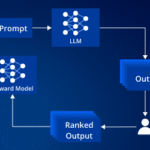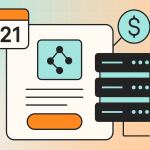Learn practical, battle-tested ways to cut LLM inference costs — from model-level optimizations and smarter hardware choices to operational tricks like batching, caching, and context engineering — and get clear guidance on when to apply each technique and what to watch for. Running large language models in production is a recurring bill you can’t ignore. […]
Category: AI & Emerging Tech
Model Procurement & Sandbox Playbook: How PMs Evaluate Third-Party Models Safely
Quick summary: Buying or integrating a third-party model isn’t the same as choosing a library. It’s a cross-functional program that touches product, engineering, security, privacy, legal, finance, and customer teams. This playbook gives product managers an operational process and downloadable-ready artifacts (scoring matrices, test suites, sandbox checklist, contract snippets, rollout stages) so you can evaluate […]
Operationalizing RLHF: SaaS-Scale Human Feedback
Reinforcement Learning from Human Feedback (RLHF) is no longer just a research trick — it’s the practical way teams align large language models to be helpful, safe, and on-brand. But the algorithm (reward model + policy tuning) is only half the work. To operate RLHF at SaaS scale you need robust human-feedback pipelines: consistent rating […]
Model Interoperability: Multi-Vendor Fallbacks
A hands-on playbook for engineering, product and ML teams — design patterns, routing, fallbacks, arbitration, and ops for running multiple models from different vendors in production. Running multiple vendor models together isn’t just a vendor-diversity exercise or a cost play. It’s about resilience (one vendor has an outage), economics (use cheaper models when good enough), […]
Accounting for LLM Costs: Per-Feature Amortization Models for SaaS
Building AI features into a SaaS product is exciting — and expensive if you don’t account for where that cost actually lands. Most FinOps writeups focus on high-level savings: batching, quantization, or switching models. That’s useful, but it misses the question product teams desperately need answered: How do you allocate LLM costs to features and […]
California’s New AI Safety Law (SB-53): What Publishers & Startups Need
Legal disclaimer: This article summarises California Senate Bill SB-53 for informational purposes only and does not constitute legal advice. Consult a licensed attorney for compliance guidance. TL;DR SB-53 (Transparency in Frontier AI Act) requires large frontier model developers to publish safety frameworks and testing information. SaaS vendors should review procurement & provider disclosures and update […]
Anthropic’s Claude Sonnet 4.5 — Extended Agent Runtimes & Code Gains
Anthropic’s new Claude Sonnet 4.5 is being positioned as a milestone release for agentic AI and developer productivity: the company claims it sustains truly long-running autonomous tasks while delivering top-tier coding ability and better, safer behavior than prior Claude models. For engineering teams building agent-driven workflows, IDE assistants, or production-grade automation, Sonnet 4.5 is worth […]
The EU AI Act & Global Compliance Roadmap — What SaaS Vendors Must Do in 2025
The EU’s landmark AI Act is changing the rules of the road for software vendors that embed AI into products and services. For SaaS vendors, the Act is not a theoretical policy exercise — it forces concrete lifecycle changes: classification of products by risk, ongoing monitoring, documentation requirements, incident reporting, human oversight, and data-governance obligations. […]
The Rise of LLMOps: Productionizing Large Language Models at Scale (2025 Playbook)
Enterprises are rapidly adopting large language models (LLMs) to power search, assistants, content generation, summarization, and novel customer experiences. But dropping a foundation model into production is not the endpoint — it is the start of a complex operational journey. LLMOps (Large Language Model Operations) has emerged as the discipline and toolchain that closes the […]
Meta Launches Vibes Feed Packed With AI Generated Videos
Meta recently launched Vibes, a short-form feed of AI-generated video clips inside the Meta AI app and on meta.ai. The feature lets users generate, remix, and share bite-size videos created by generative models. Each clip can be altered — change the music, update the visual style, remix motion or color — and the platform surfaces […]









